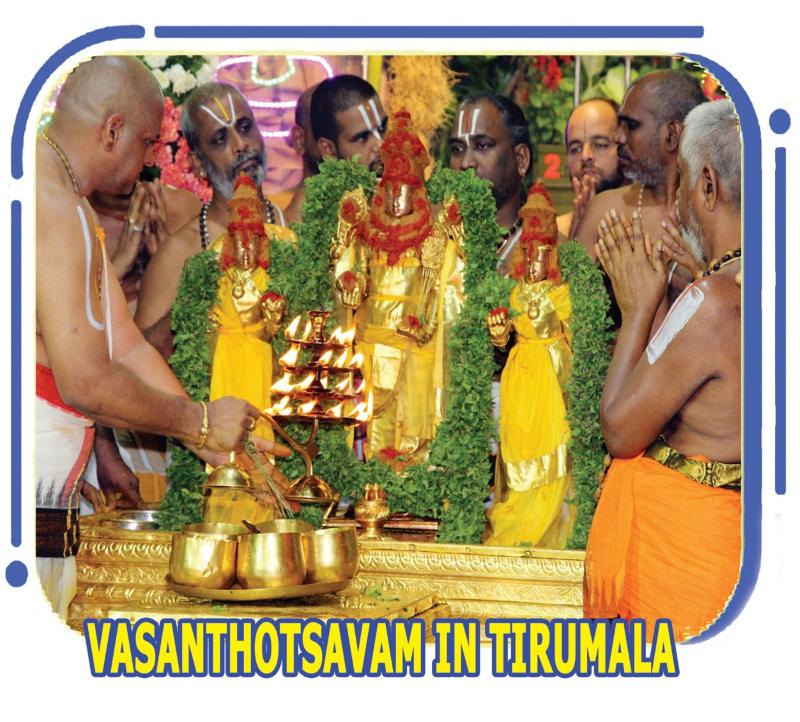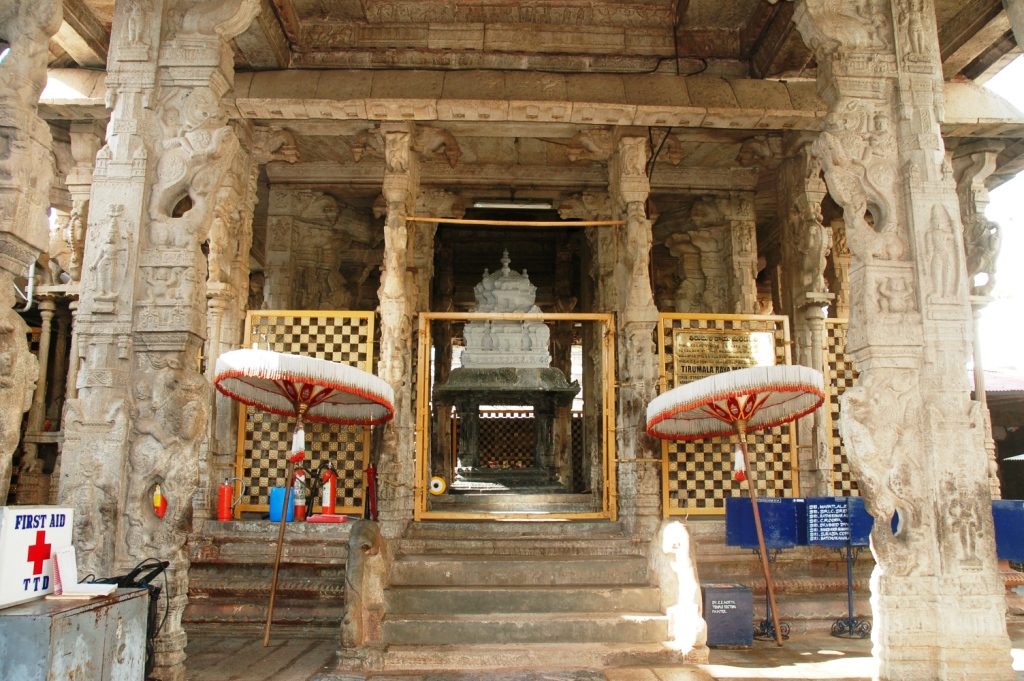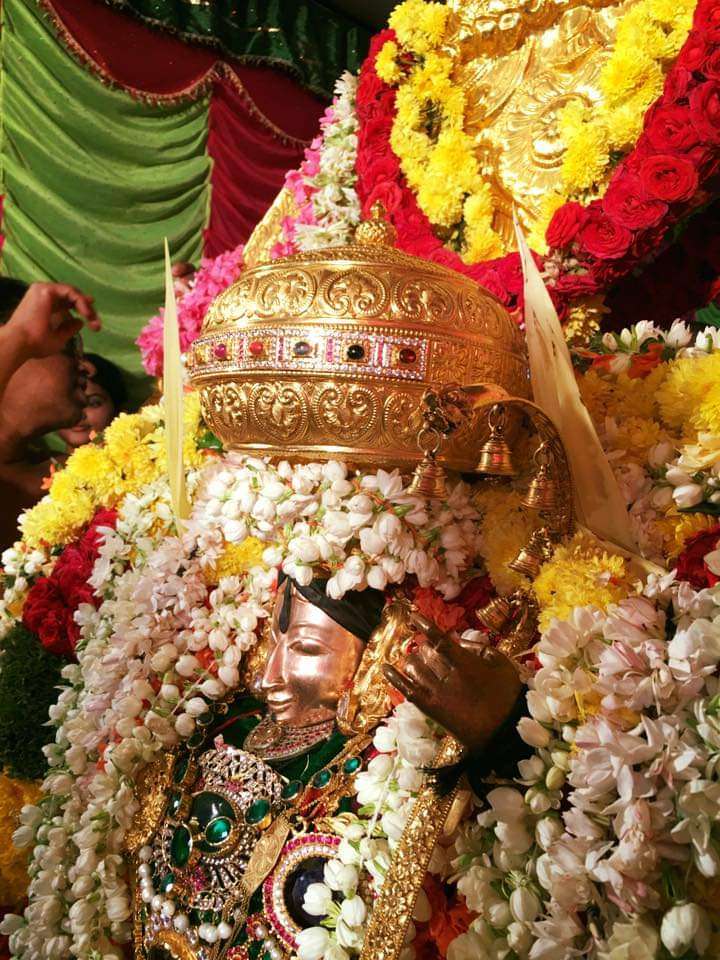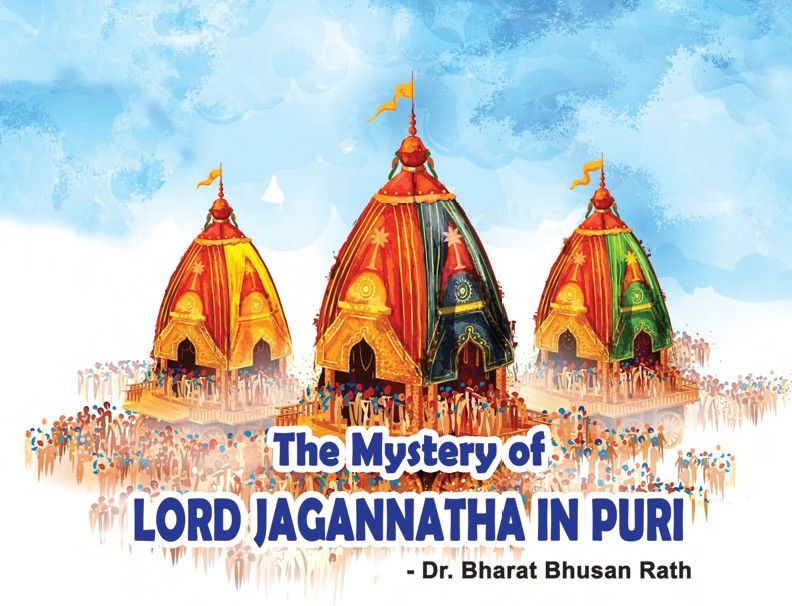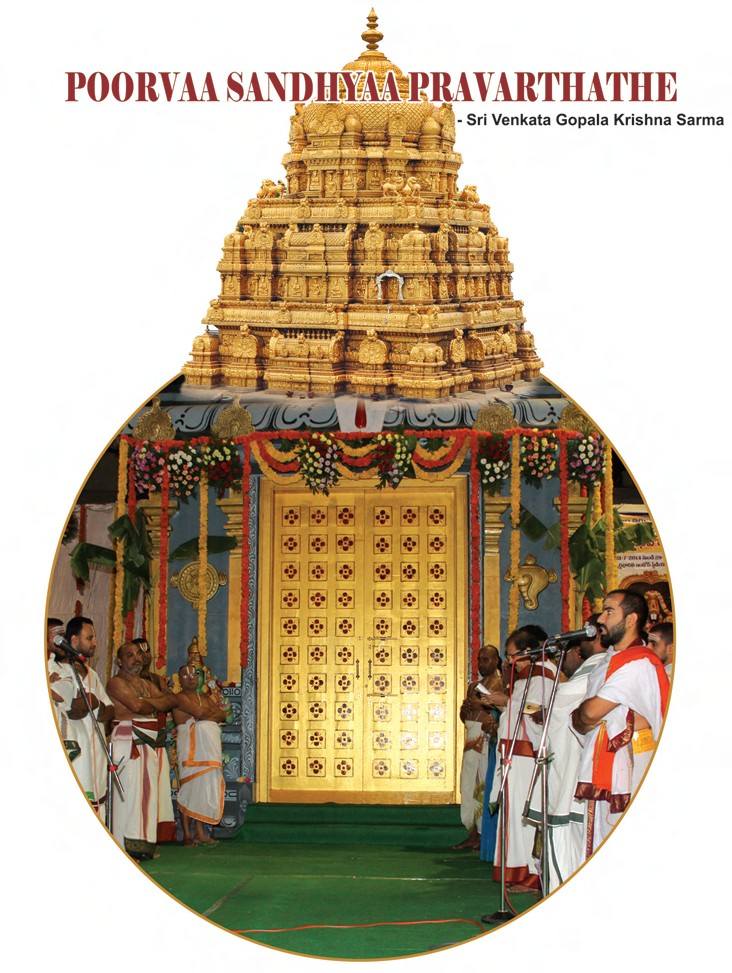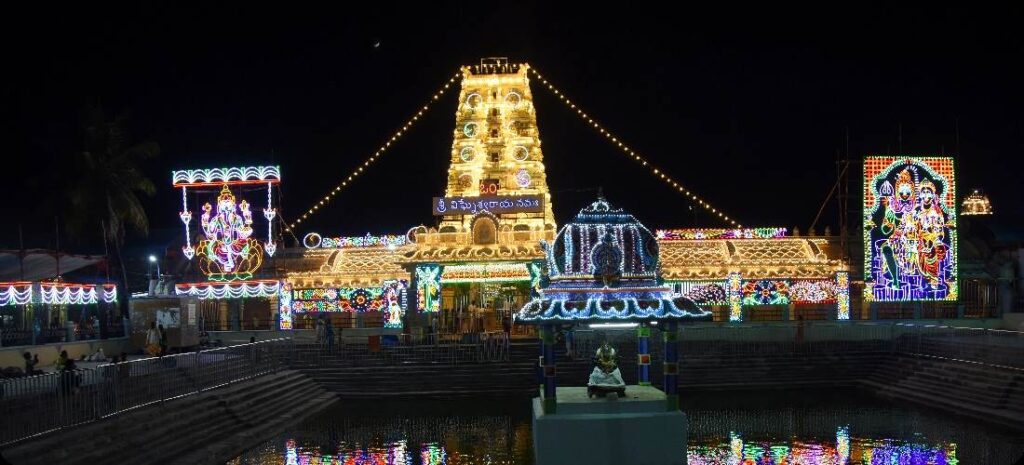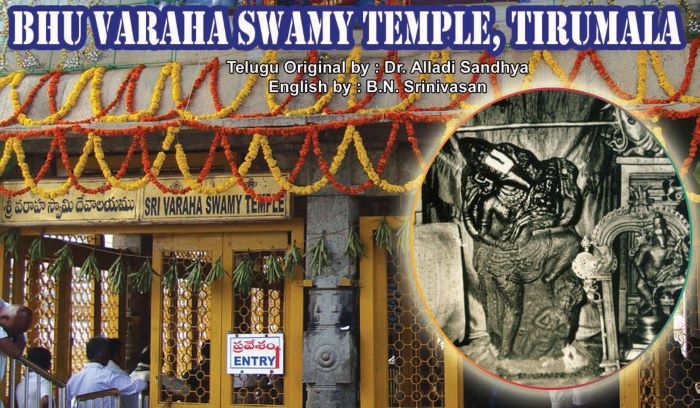Vasanthotsavam 2025 in Tirumala The three-day Vasanthotsavam festival is usually performed in Tirumala on the auspicious days of Trayodasi, Chaturdasi and Pournami in the month of Chaitra Masam (March/April) every year. This year, Vasanthotsavam will be held in Tirumala from 10-04-2025 to 12-04-2025. Tirumala is said to be cold, but the temperatures remain high in Read More
Author:
Snapana Beram Inside Tirupati Balaji Temple
Snapana Beram / Sri Ugra Srinivasa Moorthy Sri Ugra Srinivasa Moorthy (Ugra – ferocious) with His two Consorts Sri Devi and Bhoo Devi, as per temple tradition, is also known as Venkatattu Raivar, Snapana Beram, Snapana Moorthy and Achyuta Beram. To Snapana Beram (Bath Image) daily Abhishekams are not offered. These idols – Srinivasa Moorthy, Sri Read More
Anna Unjal Mandapam
Mandapams of Tirumala The lush green forests of Seshachala house, Sri Venkateswara Swamy, who is also revered as Perumal, Venkatachalapati, Tirumalesa, Govinda, Balaji, Srinivasa and many more names. The ancient temple of Lord Venkateswara in the hill shrine of Tirumala is an amazing complex of history, culture, and traditions. Almost every brick speaks volumes about Read More
Sikyotsavam: Explore the Vibrant Hindu Festival
Sikyotsavam or Utlotsavam Sikyotsavam, Utlotsavam, or Uriyadi festival is celebrated with full gaiety and religious fervour in Tirumala and Tirupati every year. This Historical festival is celebrated, and many devotees participate to observe the event. Lord Venkateswara’s Temple is known for many festivals throughout the year and it is called ‘Nitya Kalyanam Pacchatoranam’. Lord Venkateswara Read More
The Mystery of Shree Jagannath Temple, Puri
Shree Jagannath Temple of Puri: Explore the Secrets & Traditions Shree Jagannatha’s Dham in Puri is one of the four renowned Dhams in India. The word Jagannath means the God of the Universe. The Scriptures say that Lord Jagannatha is the presiding deity of the Purushottam Kshetra. There are many holy places in the Purushottam Read More
Sri Sathyagiri Natha Perumal Temple, Tirumayam (108 Divya Desams)
Sri Sathyagiri Natha Perumal Temple, Tirumayam Location Tirumeyyam town is located approximately 70 to 100 km east and north of Madurai in Tamil Nadu. Divya Desam Sri Arulmigu Sathyagiri Natha Perumal Temple (Location of the temple on Google Maps) Sthalapuranam It is said that the sage Satya prayed for salvation and Lord Vishnu promised to Read More
Sri Sowmiya Narayana Perumal, Tirukostiyur (108 Divya Desams)
Sri Sowmiya Narayana Perumal, Tirukostiyur Location Tirukostiyur is located approximately 70 to 100 km due east and north of Madurai in Tamil Nadu Sthalapuranam A large group of sages gathered here to debate on Hiranyakasipu’s torture and prayed to Lord Vishnu along with other ‘devas’ to show the form He would take to kill the Read More
Significance of Sri Venkateswara Suprabhatham
Sri Venkateswara Suprabhatham The sonorous verses of ‘Sri Venkateswara Suprabhatham‘ ring in our ears, reminding us of the Lord and his glory, and of the wonderful state of nature at the time of dawn when all beings seem to revere the all-pervading Lord. The verse of this wonderful Suprabhatam is from Srimad Ramayanam of Adi Read More
Kanipakam Temple: Guide to Visiting the Swayambhu Vinayaka
There are very few temples of Lord Vinayaka in Andhra Pradesh. Kanipakam Sri Varasiddhi Vinayaka Swamy Temple is one of the famous and ancient historical temples in Andhra Pradesh. Kaniparakam –> Kanipakam Temple Kanipakam is situated in Irala Mandal of Chittoor District and eleven kilometres from Chittoor. Kanipakam is on the banks of River Bahuda. Read More
Adi Varaha Kshetram: Powerful Vishnu Temple
Adi Varaha Kshetram – Tirumala The Universal Supremo of Kaliyuga, Sri Venkateswara Swamy is residing in Tirumala with the purpose of protecting His devotees across the globe in this aeon. Puranic legends indicate that Sri Maha Vishnu after completing His divine task of eliminating the demons has taken abode on Venkatachala hills in the incarnation Read More
